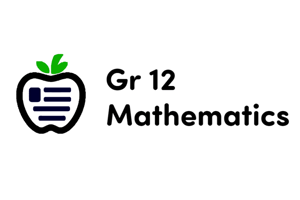Podcast
Questions and Answers
What does the Intermediate Value Theorem state about a function defined on an interval?
What does the Intermediate Value Theorem state about a function defined on an interval?
- The function must be continuous to apply the theorem. (correct)
- An interval must be closed for the theorem to apply.
- For every value between $f(a)$ and $f(b)$, there exists at least one $c$ such that $f(c) = k$. (correct)
- A function must always reach its maximum value.
Which type of set does not contain any elements?
Which type of set does not contain any elements?
- Universal Set
- Infinite Set
- Finite Set
- Empty Set (correct)
Which operation yields a set containing only the elements that are present in both sets?
Which operation yields a set containing only the elements that are present in both sets?
- Difference
- Union
- Complement
- Intersection (correct)
What type of interval includes both endpoints?
What type of interval includes both endpoints?
What operation does A - B represent in set theory?
What operation does A - B represent in set theory?
Which type of set can contain an unlimited number of elements?
Which type of set can contain an unlimited number of elements?
What is an example of a semi-open interval?
What is an example of a semi-open interval?
What is the complement of a set A within a universal set?
What is the complement of a set A within a universal set?
Flashcards are hidden until you start studying
Study Notes
Intervalos y Conjuntos
Aplicaciones En Análisis Matemático
- Definición de Conjuntos: Colecciones de objetos (elementos) que pueden ser números, puntos, etc.
- Intervalos: Conjuntos de números que representan todos los valores entre dos extremos.
- Análisis de Continuidad: Los intervalos son fundamentales para definir la continuidad y derivabilidad de funciones.
- Teorema del Valor Intermedio: Afirma que para cualquier valor entre (f(a)) y (f(b)), existe al menos un (c \in (a, b)) tal que (f(c) = k).
- Conjuntos Abiertos y Cerrados: Importantes en la definición de límites y convergencia.
Tipos De Conjuntos
- Conjuntos Finitos: Tienen un número limitado de elementos (ej. {1, 2, 3}).
- Conjuntos Infinitos: No tienen un límite en el número de elementos (ej. {1, 2, 3, ...}).
- Conjuntos Vacíos: No contienen ningún elemento, denotado por ∅.
- Conjuntos Universales: Incluyen todos los elementos bajo consideración en un contexto particular.
- Conjuntos Disjuntos: No comparten elementos. (ej. A = {1, 2}, B = {3, 4}).
Operaciones Con Conjuntos
- Unión (A ∪ B): Todos los elementos que están en A, en B o en ambos.
- Intersección (A ∩ B): Elementos que están en ambos conjuntos A y B.
- Diferencia (A - B): Elementos que están en A pero no en B.
- Complemento (A'): Elementos que no están en A dentro del conjunto universal.
- Producto Cartesiano (A x B): Conjunto de todos los pares ordenados (a, b) donde (a ∈ A) y (b ∈ B).
Intervalos Numéricos
- Intervalo Abierto: (a, b) incluye todos los números entre a y b, excluyendo a y b.
- Intervalo Cerrado: [a, b] incluye todos los números entre a y b, incluyendo a y b.
- Intervalo Semiabierto: [a, b) o (a, b] incluye uno de los extremos y excluye el otro.
- Intervalos Ilimitados:
- (a, ∞) incluye todos los números mayores que a.
- (-∞, b) incluye todos los números menores que b.
- Notación: Se utiliza paréntesis para intervalos abiertos y corchetes para intervalos cerrados.
Applications in Mathematical Analysis
- Sets Definition: Collections of objects (elements) such as numbers or points.
- Intervals: Sets of numbers that include all values between two endpoints.
- Continuity Analysis: Intervals are essential for defining the continuity and differentiability of functions.
- Intermediate Value Theorem: Ensures that for any value (k) between (f(a)) and (f(b)), there exists at least one (c \in (a, b)) such that (f(c) = k).
- Open and Closed Sets: Crucial for defining limits and convergence in analysis.
Types of Sets
- Finite Sets: Contain a limited number of elements (e.g., {1, 2, 3}).
- Infinite Sets: No limit on the number of elements (e.g., {1, 2, 3,...}).
- Empty Sets: Contain no elements, represented by ∅.
- Universal Sets: Encompass all elements under consideration in a specific context.
- Disjoint Sets: Do not share any elements (e.g., A = {1, 2}, B = {3, 4}).
Operations with Sets
- Union (A ∪ B): Includes all elements in A, B, or both.
- Intersection (A ∩ B): Contains elements common to both A and B.
- Difference (A - B): Elements in A that are not in B.
- Complement (A'): Elements not in A within the universal set.
- Cartesian Product (A x B): Set of all ordered pairs (a, b) where (a ∈ A) and (b ∈ B).
Numeric Intervals
- Open Interval (a, b): Includes all numbers between a and b, excluding a and b.
- Closed Interval [a, b]: Encompasses all numbers between a and b, including a and b.
- Semi-open Interval [a, b) or (a, b]: Includes one endpoint and excludes the other.
- Unbounded Intervals:
- (a, ∞): includes all numbers greater than a.
- (-∞, b): includes all numbers less than b.
- Notation: Parentheses indicate open intervals, while brackets denote closed intervals.
Studying That Suits You
Use AI to generate personalized quizzes and flashcards to suit your learning preferences.



